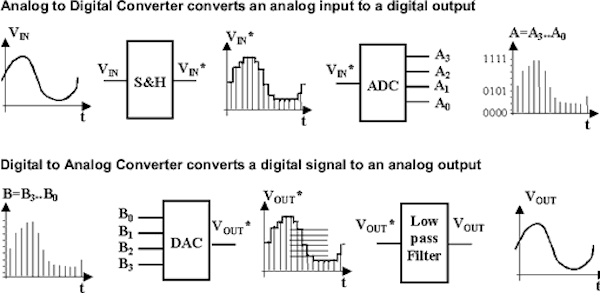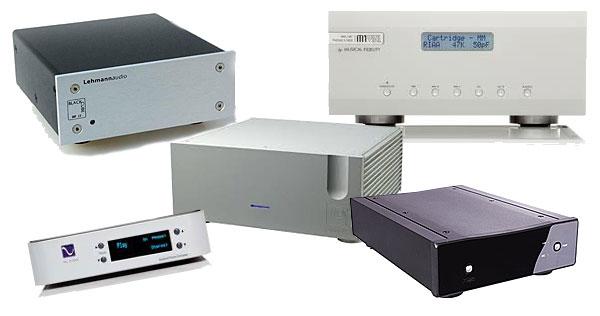Vote
So, thanks to a reader's generosity here's a comparison of "So Far Away" from Tapestry as a One-Step Mobile Fidelity release and the ORG edition from a few years back cut by Bernie Grundman and Chris Bellman. Both of these editions are at 45 rpm. I'm not going to foul the waters by giving you my take. At least not until the votes are in and perhaps not at all. Polls will be open for 1 week.
BTW: turntable was OMA K3, Frank Schröder K3 arm, Lyra Atlas Lambda SL cartridge, CH Precision P1/X1 phono preamp, Lynx HiLo A/D converter.
Some were MM only, others were MM/MC. The point was, should you buy a MM/MC phono preamp now for your MM cartridge with an ear towards the future, or should you maximize performance with a high quality MM-only phono preamp, and perhaps later add a step-up transformer or head amp?
Some were MM only, others were MM/MC. They were compared here, and the results of the voting published here.
Finally it's time to fully answer the original question using a MC cartridge. However, there are a few changes (remember this is not a scientific test, but rather an informative and useful one that's also entertaining for some of us).
So here's what we have: we are using the Hana SL low output moving coil cartridge (.5mV output) mounted on a Graham Phantom III mounted on an Air Force 3 turntable. And again we have the following phono preamplifiers:
Music Hall pa 2.2
AVM P 1.2
Lejonklou Gaio
Lehmann Silver Cube
Graham Slee Era Gold V
ifi phono2
Musical Fidelity MX-VYNL
Missing is the Jasmine 2.5DU. Why? It had to be returned to the importer but of equal importance is that despite the online "noise" about how great it is, I thought (and most of you thought) it sounded mediocre and not at all competitive at its price compared to some of the others.
So instead, add the Ciaudio PEQ-1 (formerly known as Channel Island Audio). This is a $999 MM/MC unit that's made in America and is of uncommonly high build quality for the price point. It will shortly receive a full review. In the meantime other phono preamps have also arrived including the Graham Slee Accession and a few others. These will have to be separately reviewed or this "vote" will get totally out of control!
Added to the mix are two step-up devices: the original Hagerman Audio Piccolo, which is an electronic "head amp" that's been replaced more recently with the $279 PIccolo2 and the Bob's Devices Cinemag 1131 an $1195 step up transformer. Both units are shown in the photo at the top of this story.
So what you will be listening to are the Music Hall, AVM, Lehmann, Musical Fidelity, ifi and Ciaudio in moving coil mode loaded at 100 ohms and the Graham Slee Era Gold used with the Bob's step up transformer and the Lejonklou used with both the Hagerman head amp and the Bob's Devices step up transformer. The files are 96/24 aiff digitized via a Lynx HiLo A/D converter.
The music has been changed too. Instead of the Sonny Clark Memorial Quartet we're using a excerpt from an extraordinary Reference Recordings double 45rpm issue, Fiona Boyes' Professin' the Blues (Reference RM 2517).
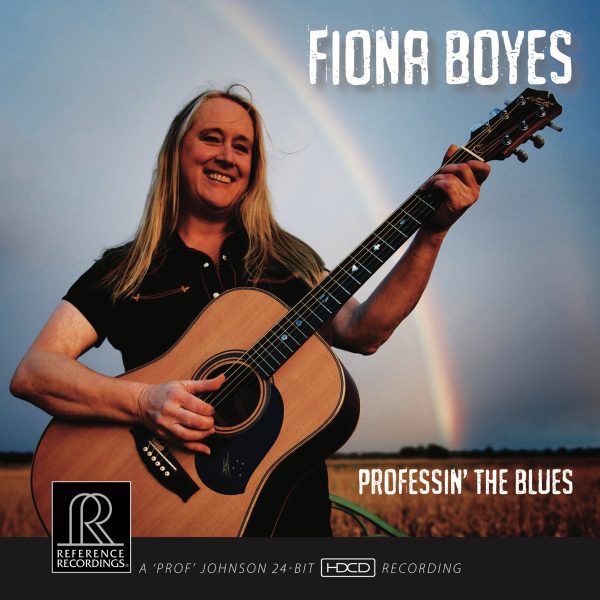
Boyes is a well respected Australian blues veteran who I'm sure you'll enjoy even if for less than two minutes. This record needs and will get a full review. It was chosen because it is a fine Keith O. Johnson recording that will tell you about each phono preamp's transient response, bass extension and control and delivery of spatial information. The differences will in some cases be obvious, while in others more subtle.
Please keep in mind that the levels are not matched due to the differing gain and outputs among the participants so adjust accordingly and each track is not of the same length but they are close. Again, this is not a "scientific" test!
So here we go:
By the way, the interconnect used between the head amp and step-up transformer and MM phono preamp was a very inexpensive cable (as in under $20).
So please listen and vote! And sorry about all of the hyperlinks but they should be useful!
Or does it make more sense to buy a dedicated MM phono preamplifier now and maximize performance for the dollars spent and later add a "head amp" or a step-up transformer to use with a moving coil cartridge?
So here is the same excerpt of "Cool Struttin'" from the great 1986 Black Saint album Voodoo (120 109 1) performed by The Sonny Clark Memorial Quartet, which was Wayne Horvitz, John Zorn, Ray Drummond and Bobby Previte.
I chose this because A) it sounds awesome, B) it has excellent dynamics C) it is a good test of "rhythm'n'pacing", D) it has really taut bass, and E) the music is outstanding (someone should reissue this AAA recording along with many other Black Saint/Soul Note records).
The same excerpt has been recorded through eight different phono preamplifiers, a few MM-only and the rest MM/MC using the superb sounding Audio-Technica AT150ANV MM cartridge mounted on a Rega Planar 3.
The phono preamplifiers (in no particular order) are the:
Music Hall pa 2.2
AVM P 1.2
Lejonklou Gaio
Lehmann Silver Cube
Graham Slee Era Gold V
ifi phono2
Musical Fidelity MX-VYNL
Jasmine 2.5DU
Please download the 96/24 files and listen. Then vote in the order in which you like the sound. Also please post comments about which you preferred and why.
The prices range from $399 to $4500. The files are not listed to match the above order! In another story to be posted shortly, you'll find a description of each unit's features but not the editor's sonic assessment, which will only be posted after the close of voting in a few weeks (giving you plenty of time). At a later date, we will repeat the vote with the MC inputs of the units that are MM/MC and with both a Bob's Devices step-up transformer and a Hagerman Audio battery powered "head amp".
Here are the files:
The five are: the original American Mercury pressing, the UK RCA early '70s reissue, the Japanese late '70's reissue, the Rykodisc digitally remastered and finally the new "Five Years" box set version, whose provenance remains unknown.
The files are not presented in that order, nor are they identified in any way. This is not a formal test so while I normalized peak levels, these are not all presented at identical levels. Please try to adjust levels for each when listening and don't spectrum analyze and spill the analog/digital beans okay? Just listen for yourself and pick your favorite, or maybe you think they all sound good (or not). Also please comment!
I'd pay particular attention to the güiro and to the flanging on Bowie's voice as well as to the air and space around the instruments. Unfortunately the tracks are limited to 45 seconds to avoid legal issues.
And yes you can say there's something oxymoronic about presenting digital files of what might be digitally sourced LPs, or you could say the entire exercise is moronic, which is fine with me.
Source: Caliburn TT, SAT arm, Lyra Atlas cartridge, Ypsilon MC-10 SUT/VPS-100 phono preamp, Lynx Hilo A/D converter.
(Note: when these files were first posted the file names accidentally gave away their identities. The names have been changed as have the order so "A" before is not "A" now!)
Files "A" and "B" were both made using Onkyo's CP-1050 Direct Drive turntable fitted with a Shure M97xE cartridge ( it comes with an Audio Technica AT 3600) with the output digitized using a Lynx HiLo A/D, D/A converter.
Both files were AudioLeak normalized to -.1dB. The music is an approximately one minute excerpt of "My Return" from The Twilight Hour's Stereo Night LP reviewed here a few years ago.

Listen to both and then choose your preference. Or, if you think they sound sufficiently similar or identical, choose "sound the same or too close to call".
For more on the U-Turn Pluto go here
For more on the Schiit Mani (currently out of stock) go here
Here’s your opportunity to compare ADCs (analog to digital converters) priced from $300 to $3995. They offer a wide range of features and enhancements that will be discussed in the reviews to be posted shortly.
Meanwhile, below are seven 96/24 files produced by five A/D converters. Why seven from five converters? One, the M2TECH Joplin offers a choice of 96/24 or 96/32 resolution (it can also do the conversion at 384/32 resolution but for the purposes of this shoot out we’re sticking with 96kHz).
Of course, though the conversion is at 96/32 the files are both 96/24 but it would be interesting to hear if recording at a higher bit rate and decimating it to 24 bits sounds better or worse than the one converted directly to 96/24.Two files were created using the Lynx Hilo but using different recording chains as described below.
So, what you will be hearing is a three minute excerpt from Vanish an upcoming Yarlung Records release by the percussion group Smoke & Mirrors, used with permission. The record was produced from an analog master tape. The image here is from the DSD version recorded simultaneously using that format.

The recordings were made using the Continuum Caliburn turntable and Ortofon’s new A95 cartridge mounted on the Continuum Cobra tone arm. The Ypsilon VPS 100 phono preamp and 10L step up transformer was used for six of the seven files. Vinyl Studio software for Mac recorded those six. The USB cable was WireWorld’s Platinum Starlight, while the Lynx Hilo connected via an Apple Thunderbolt cable. Do USB cables really make a difference? Perhaps in the near future we’ll test that with downloadable files.
One of the files was created using Channel D’s Seta® PIccola battery powered phono preamplifier sending a “flat” (no RIAA equalization) signal to the Lynx Hilo A/D converter and recorded using Channel D’s Pure Music software, with RIAA applied in the digital domain. So two of the files use the same converter but very different chains.
Lowest to highest price, the A/D converters are the HRT Linestreamer+, ($299.95), the P.S. Audio NuWave Phono Converter ($1,899), the Channel D Seta Piccola ($1,899, or $2098 as supplied including optional RIAA module), the M2TECH Joplin ($2,499), the Lynx Hilo ($2499) and the Ayre QA-9 ($3995).
These units have a wide range of operating features. For instance the P.S. Audio includes a built-in MM/MC phono preamplifier, two earlier versions of which was previously reviewed by analogplanet. The M2TECH includes a MM phono preamplifier as well as a variety of EQ curves. The Lynx Hilo is a pro audio product that’s both an A/D and D/A converter. Some of these units are DSD capable but more about that in the capsule reviews coming up.
We chose PCM over DSD because more readers probably have PCM DACs. So here are the seven files. Please listen and vote. These are large files and will take some time to download depending upon the speed of your internet connection.
Over the past few years a few audiophile/record collectors have played for me records they'd purchased, some at considerable expense, from Tom Port's Better Records, which advertises on this website.
The business model is to scour the world for used records and select the very best sounding for resale at what some would consider to be very high prices that some find outrageous. I don't. Going through dozens or more pressings of a given title to find the very best sounding is a time consuming process. You have to listen all the way through especially if you sell the records with a money back guaranty.
You could do likewise if you have the time, inclination and money but those with money it's easier to let someone else do the work and pay for it. Anyone who's sat down with a stack of say, Crosby, Still & Nash knows pressing quality and sonics are all over the map, with specific lacquer cuts and pressing plants producing the best sound—but not always. So while cynics will say they can buy clean copies all day for a few bucks of CS&N, getting a great sounding copy (beyond just "clean") takes perseverance and a great deal of knowledge. No doubt over the decades Port has been doing this he's gained plenty.
There's no controversy when you hear an "RL" Led Zeppelin II of course. That is most certainly a "better record" and worth whatever it costs to get one in great condition. On the other hand, a friend got a copy from "Better Records" of The Rolling Stones's Let It Bleed on the American London label that cost him plenty. In my opinion there are no good, not to mention better copies of that album on London records, which were all mastered and pressed in America. The only great copies of that one are on the British Decca label (in this case Londons and Deccas are way different!).
That said, though I believe the company's term "Hot Stamper" is a marketing ploy (like "Living Stereo", or "Living Presence") most of the "Better Records" records that I've heard have been sonically superior for whatever reason or reasons so it's no mystery the company has thrived and prospered over the decades its been in business even though, as some of you may know, Mr. Port and I have not always seen (6) "eye to eye" on everything.
After Analogplanet's enthusiastic review of Analogue Productions' Scheherazade (LSC-2446) "Living Stereo" reissue, Better Records contacted us with an offer and a challenge: they would send us a nearly top rated original "Hot Stamper" pressing for us to compare with the reissue.
The copy that arrived (some time ago, I'm sorry to admit), pressed at RCA's Indianapolis plant had an "N/A" rating for side one (lacquer 14S) and an A++/A+++ rating for side two. The problem with side one was immediately obvious before I even played it: visible "strings of pearls" throughout "The Story of the Kalendar Prince" indicating "non-fill" issues. Top rated side two (12S, first mother, first stamper [A1]) looked and sounded as advertised.
However, rather than me comparing the two records, why don't you do it? So here are two 90 second excerpts from side two. Admittedly a longer sample would be more useful but I think the excerpted section is sufficiently useful. The turntable was the Continuum Caliburn with Cobra arm. The cartridge was the .2mV Transfiguration Proteus—which is not a warm and soft sounding cartridge and the phono preamp was the Ypsilon VPS-100 with the MC16L step-up transformer. A/D conversion was via the Ayre QA9 at 96/24 resolution.
The cuts are not at the same level and I chose to not manipulate the files in any way to level-match so adjust as necessary. Vote for which you prefer and then comment as to why and which you think is which.
One thing I can tell you for sure: the reissue jacket is far superior to the original since Analogue Productions went to the trouble of getting the original artwork including a spectacular image of Fritz Reiner. But the sound? You decide!
The original 96/24 Nagra digital recording used three Neumann M50 tube microphones in the classic "Decca tree" configuration.
The turntable/tonearm used was the recently reviewed Zorin Audio combo fitted with a Lyra Titan i feeding a feeding the recently reviewed Swan Song Audio Cygnet MC phono preamplifier. The A/D converter was the Ayre QA-9 currently under review. The files are 16 bit/44.1K WAV.
The mats were: 1) the stock carbon fiber one supplied with the Zorin 2) a Boston Audio Graphite mat 3) "The Simple Mat" made from synthetic cork 4) a now discontinued one of what feels like ultra-thin 1/16th of an inch cork from a fellow who shall remain nameless and whose mat was nameless so I'll call it the Brooklyn mat 5) the Hideinthesound suede mat 6) the Hideinthesound split mat with suede on one side and a smooth hide on the other side, 7) The Music Hall cork mat with the raised discs 8) the Moo mat made of cow hair and hide.
There are dozens of other mats worthy or coverage but we'll start with these.
Please download the files and listen. The plucked, percussive mandolin is an ideal instrument to demonstrate differences (if there are any) among the mats in terms of transient speed and clarity, sustain and decay—especially given the recording technique, which produces stable, three-dimensional images.
There's no "best" or "worst" (assuming you hear any difference at all). It will just be interesting to see if a consensus develops around one or two of them.
After voting, please leave a comment about what you heard and why you voted as you did.
To download on a Mac, hold down the "control" key, click on the file, then select "download the file". Not sure how to do it on Windows but the files are 96/24 so if you don't download it will take quite a long time to load.
The four are the the $99 Nerve Audio PH 1.1 (MM only), the $269 Micromega MyGroov (MM/MC), the $399 iPhono (MM/MC) and the $595 Creek OBH-15 MkII (MM/MC). A future post will let you audition the latter three’s MC sections.
The record chosen for this test, used with composer’s permission, is a new big band project called what’snext (DÜNYA Records). The record is actually more of a promotional tool since it contains selections and not the entire recording. Only 1000 copies were pressed and they have all sold out. Whether or not another run will be pressed is up in the air for the moment.
The composer/arranger Mehmet Ali Sanlikol is a Turkish born pianist/composer applied to study at The Berklee College of Music at age 16 and was accepted but his parents wouldn’t let him attend.
His mentors include the late trombonist Bob Brookmeyer among others. While the opening track was “Ellington-inspired” the composer (who is a classically trained pianist and fan of Brit “prog-rock” as well a Fellow at Harvard and a faculty member at College of the Holy Cross and Emerson College) adds musical elements of his Cypriot and Turkish roots.
The turntable used was the $4180 Zorin Audio TP-S3, a belt-drive, three post “plinthless” design of polished stainless steel and aluminum alloy featuring a ceramic bearing upon which rides a massive machined aluminum 2.25 inch tall platter the underside of which is machined out concentrate mass near the periphery.
The arm is the $2280 Zorin PUS-12, a 12” inverted unipivot design featuring a patented headshell—all of which will be discussed in greater detail in an upcoming review.
The cartridge was the Shure M97xE with the Jico stylus upgrade. Good luck and may the best MM phono preamp win! The four reviews will be posted shortly.
You make the call here. Here are two 96/24 files. Are they both the same file? Or, if you hear one sounding better, state your preference.
If the files are different, one file features the Lyra Atlas installed in the standard VPI JMW arm mounted on VPI's new Classic Direct Drive turntable.
The other file features the Lyra Atlas installed on the new 3D printed tone arm on the same turntable. All measured set-up parameters were identical.
The phono preamp is the Ypsilon VPS100. The preamp is the D'Agostino Momentum while the A/D converter is Ayre's QA-9. The interconnect between the phono pre and preamp is TARA Labs Evolution, which replaces the Zero.
Please vote and leave a comment explaining your vote.
These two files, "A" and "B", contain the same short snippet of the song "If I Had My Way" by the Reverend Gary Davis, sung by Peter, Paul & Mary on their 1962 eponymous debut album (Warner Brothers WS1449). It's a fantastic sounding recording by engineer Bill Schwartau that puts each singer, closely miked in his or her own space. Mary appears in the "phantom center channel".
These two files are either identical (same file repeated) or two different files with one variable changed for the second recording. Don't let the slightly different lengths throw you off. Each was edited to a different length but they still could be the identical recording. Or not!
So please download the 96/24 AIF files and listen carefully. Then vote "same" or if you hear differences, vote for the one that sounds better and feel free to explain your votes in the "comments" section.
Good luck! And remember: the future of high quality audio is now in your hands.
Here are the two files:
The recording of the National Symphonic Winds conducted by Lowell Graham was minimally miked using Sennheisers and captured to 30IPS ½” analog tape on John Curl’s Ultramaster reel to reel deck. The sound of the enormous bass drum is absolutely sensational as you will hear. Be prepared.
Which phono preamplifier will you think sounds best? The Rega Aria? the Lehmann Black Cube SE II, the P.S. Audio NuWave Phono Converter, the Musical Fidelity M1 ViNL or the Ypsilon VPS-100?
The first four moderately priced units were tested using a Pro-Ject Xtension10 turntable ($2995) and Transfiguration Phoenix MC cartridge ($4249). The Ypsilon ($26,000+ $6000 for the “L” series transformer) was paired with the new Lyra Etna cartridge ($6995), mounted on the Kuzma 4 Point tonearm ($6500) installed on the Continuum Caliburn (don’t ask).
You’ll find reviews of the first three on analogplanet.com. The $1199 Musical Fidelity M1 ViNL was reviewed a few years ago in Stereophile and used as a benchmark in the Aria and Lehmann reviews.
The ultra-expensive front end was thrown in just as a reference, though none of these files will be identified so you will be traveling “blind.” After listening, please vote for your favorite. When we have a sufficient number of votes we will reveal which was which. Enjoy!
Here are the five files: Right click on PC or Control click on a Mac to download to your desktop.
Each was recorded using one of ten different cartridges, nine of which were mounted on a VPI Traveler connected to a Graham Slee Era Gold Mk. V MM phono preamp.
The tenth is Ortofon’s $8499 Anna, which was mounted on the Continuum Cobra tonearm, Caliburn turntable combo connected to a Ypsilon MC-16 step transformer and VPS-100 phono preamp. That file is the “control” against which the others should be compared, except it will not be identified as such. None of the files, all created using a moderately priced HRT LineStreamer+ analog to digital converter, will be identified.
If you so choose, you can download the FLAC files and using a USB DAC, play them through your audio system. This will enable you to compare each cartridge’s rendering of the same song and your judgments without knowing which was which. Should you choose, you can vote for your favorite and in addition, in the comment section, we welcome your top three or top five favorites.
Listed from least expensive to most expensive, the nine moderately prices cartridges are:
Audio-Technica AT95E ($40)
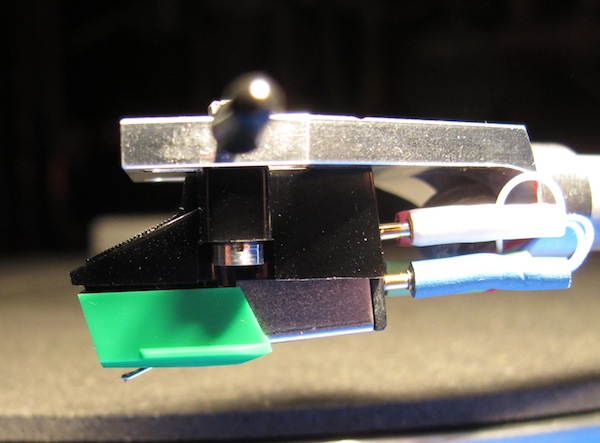
Audio-Technica AT95SA ($149.95)

Audio-Technica AT7V ($159.99)

Grado Gold 1 ($220)
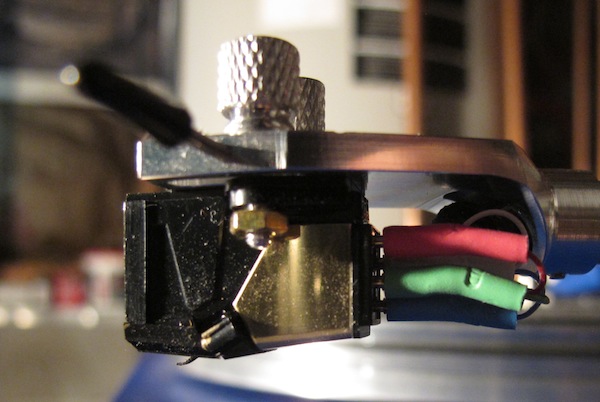
Ortofon 2M Bronze ($419)

Nagaoka MP-300 ($499)
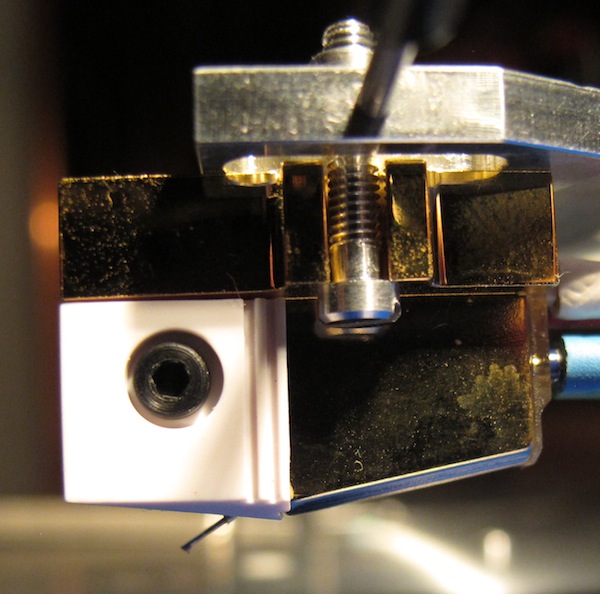
Sumiko Blue Point EVO III ($499)
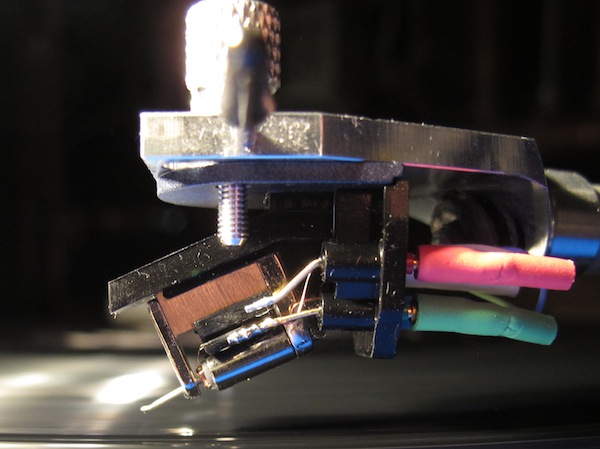
Ortofon 2M Black ($719)
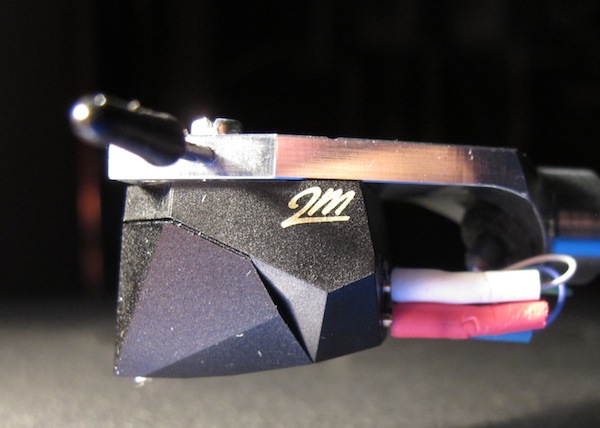
Audio-Technica AT150ANV ($999)

All are moving magnet designs, with the exception of the Grado Gold 1, which is a moving iron and the Sumiko Blue Point EVO III, which is high output moving coil design.
While the cartridges are listed above in order of price, the files are not! The are organized randomly. Right click on PC or Control click on a Mac to download to your desktop.
Download Cartridge Test File #1 (68.8 MB)
Download Cartridge Test File #2 (73.7 MB)
Download Cartridge Test File #3 (71.8 MB)
Download Cartridge Test File #4 (77.7 MB)
Download Cartridge Test File #5 (71 MB)
Download Cartridge Test File #6 (73.7 MB)
Download Cartridge Test File #7 (74.5 MB)
Download Cartridge Test File #8 (71 MB)
Download Cartridge Test File #9 (75.6 MB)
Download Cartridge Test File #10 (71.6 MB)
In a few weeks we will reveal their identities. In addition, because I’m sure some if not many of you will not take the time to download and listen, I will review each from my perspective and include the specs (etc.).
In addition, if you like the track (I didn’t get sick of it and I listened dozens of times), HDTracks has generously given us a discount download code if you are so digitally inclined. Also note that the album is available on CD and SACD as well as on vinyl.
Special HDTracks.com offer: Now through August 31st receive a 20% download discount on Myra Taylor's "My Night To Dream". Choose either the 88.2/24 bit or the 44.1k/16 bit version or both. Use promo code "compare20"
Choose your favorite sounding Cartridge Test File below:





